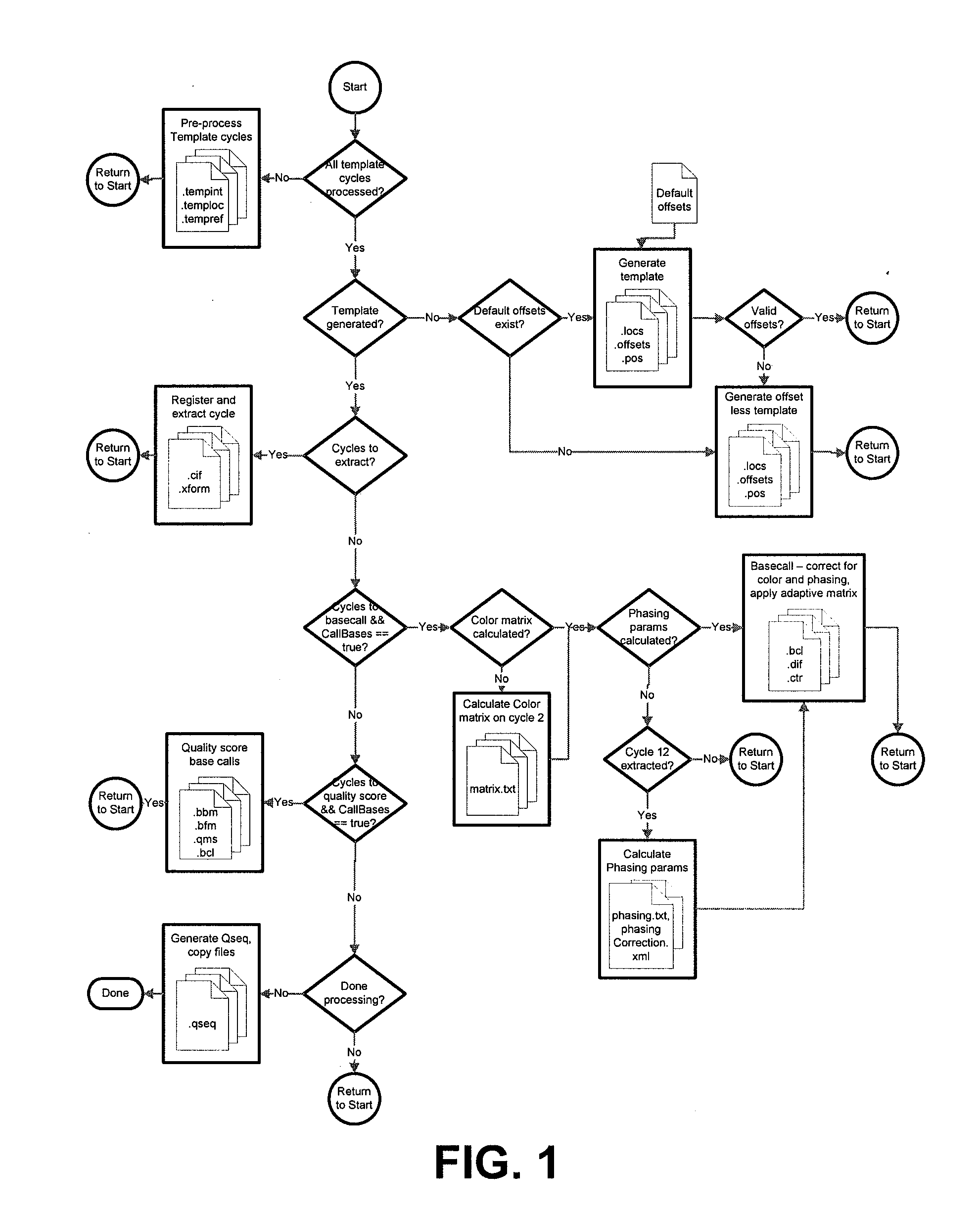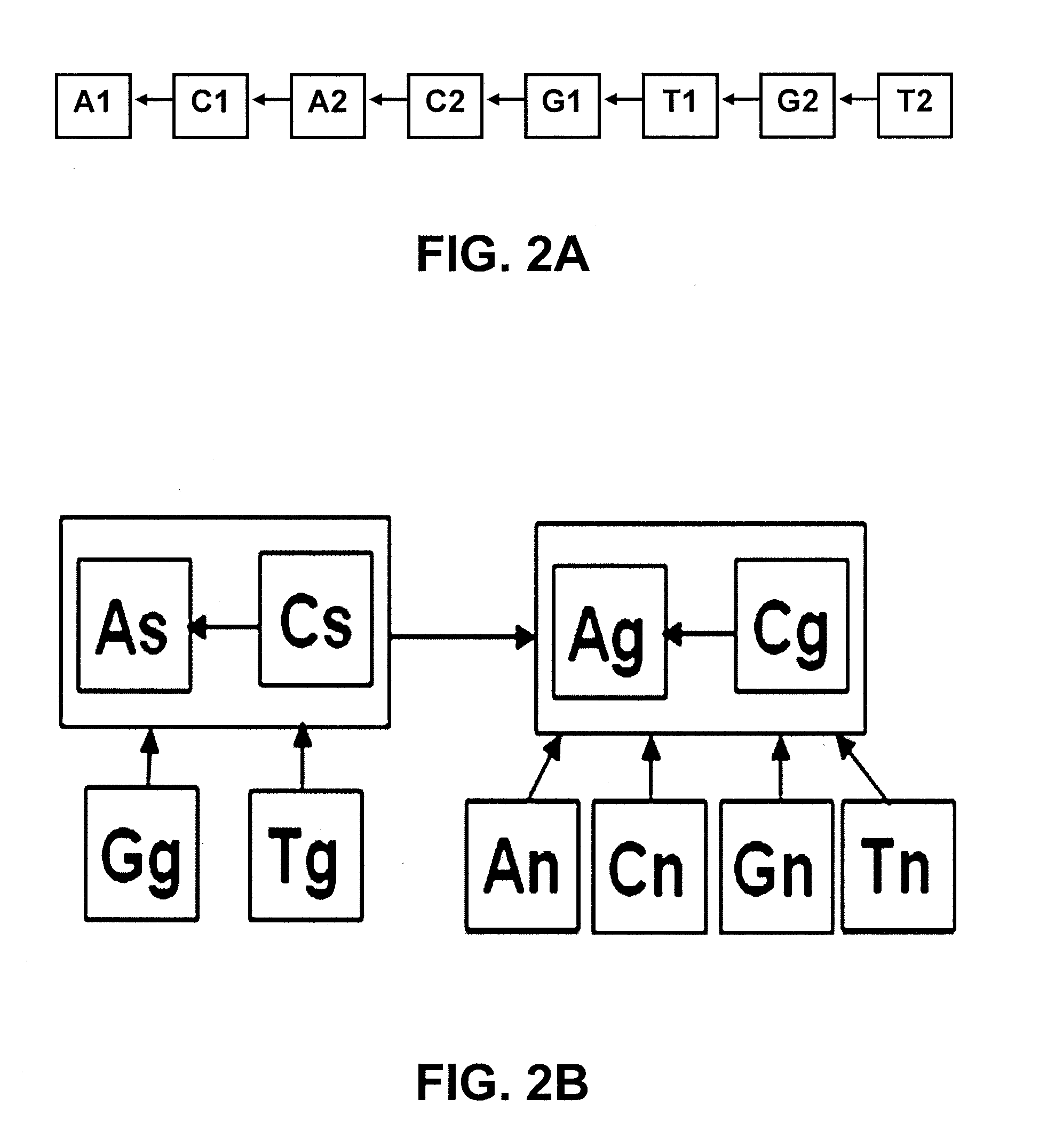Data processing system and methods
a data processing system and data processing technology, applied in image analysis, image enhancement, instruments, etc., can solve the problems of limiting the speed and quality of sequence data analysis, image data analysis presents a number of challenges, etc., and achieve the effect of improving speed and accuracy
- Summary
- Abstract
- Description
- Claims
- Application Information
AI Technical Summary
Benefits of technology
Problems solved by technology
Method used
Image
Examples
example 1
[0211]This example demonstrates how a Real Time Analysis (RTA) system performs processing and data analysis in the background of data acquisition during DNA sequencing run. At a basic level, the RTA can be classified as a state machine. In the exemplary methods shown in FIG. 1, the state machine monitors a file system to determine when a specimen is ready to advance to the next state. In this example, the conditions to advance the state for a specimen and subsequent actions to perform on that specimen are listed in the following table.
Condition to advance stateAction to performReady to pre-process Cycle 1Pre-process template cyclesReady to Calculate TemplateCalculate template (either using defaultoffsets or generate offset-less template)Ready to Register and ExtractRegister and extract cycleCycle XReady to Calculate Color MatrixCalculate color matrixReady to Calculate PhasingCalculate phasing parametersReady to Base Call Cycle XBase call and correct for colo...
example 2
Template Generation: Signal Finding
[0219]This example demonstrates how template generation is performed during a DNA sequencing run in a flow channel having a plurality of closely-spaced, high-density microarrays. An initial step in the processing of image data from a sequencing instrument is the generation of templates for each array (tile). A template defines the positions of each feature (area of clonally amplified nucleic acid) in a tile, and is used as a reference for the subsequent registration and intensity extraction steps. In this example, the templates are defined in a coordinate system relative to the A image of the first cycle.
Template Generation
[0220]In this example, template generation utilized the first four cycles of image data. Once the last cycle for a tile was imaged, its template was generated. The basic steps in template generation were:
[0221]a) find spots in all 16 images (4 channels per cycle for 4 cycles), along with the intensity and noise value for each spo...
example 3
Template Generation: Signal Selection
[0246]This example demonstrates how template generation was performed during a DNA sequencing run. A step in the processing of image data from a sequencing instrument is the process of discarding duplicate signals, e.g., two or more signals included in the template produced from the same feature. In this example, signals were ordered first by detection count, then by brightness relative to neighbors.
[0247]Spots were ordered first by detection count. A detection count for a particular spot was defined as the number of cycles where any spot was detected within 0.5 pixels of the particular spot. Spots were then ordered by brightness relative to neighbors. For this calculation, the following equation was used:
Ratio=4*Intensity[X,Y] / (NW+NE+SW+SE)
[0248]In the above equation, NW was defined as: max(Noise[X,Y], Intensity [X−1, Y−1]). NE, SW and SE are defined similarly. The max was taken to avoid instability if neighboring intensities were less than or e...
PUM
 Login to View More
Login to View More Abstract
Description
Claims
Application Information
 Login to View More
Login to View More - R&D
- Intellectual Property
- Life Sciences
- Materials
- Tech Scout
- Unparalleled Data Quality
- Higher Quality Content
- 60% Fewer Hallucinations
Browse by: Latest US Patents, China's latest patents, Technical Efficacy Thesaurus, Application Domain, Technology Topic, Popular Technical Reports.
© 2025 PatSnap. All rights reserved.Legal|Privacy policy|Modern Slavery Act Transparency Statement|Sitemap|About US| Contact US: help@patsnap.com



